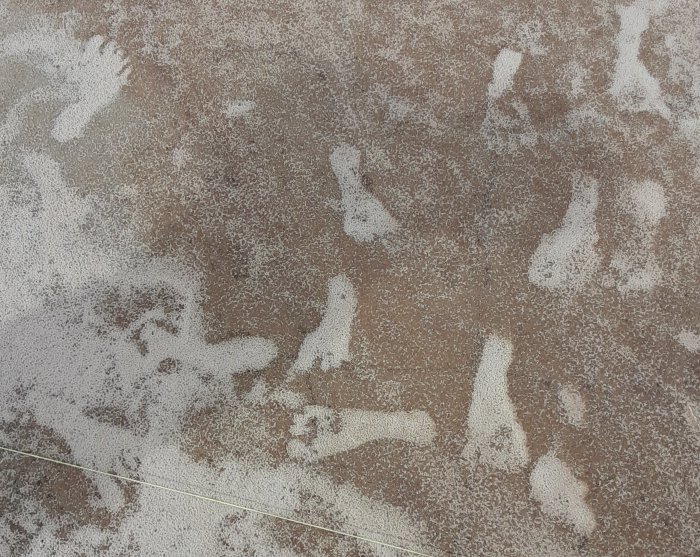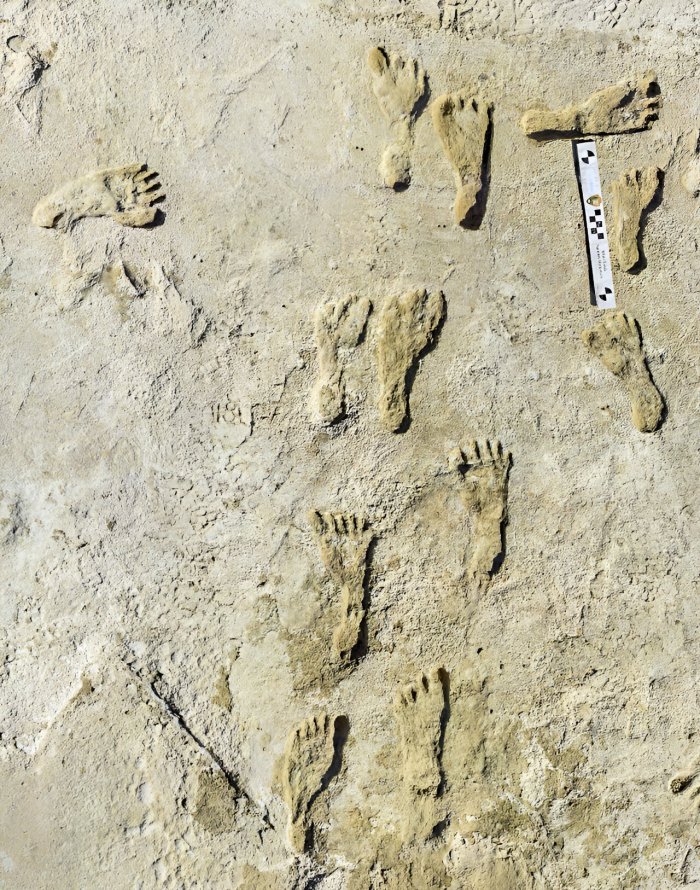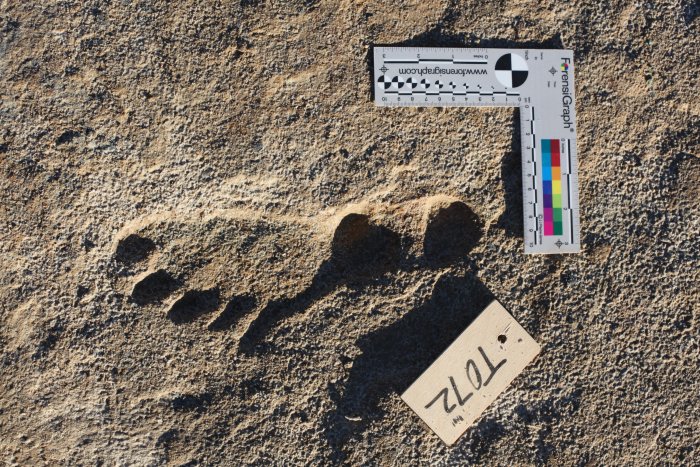Oldest Fossil Human Footprints In North America Confirmed
New research reaffirms that human footprints found in White Sands National Park, NM, date to the Last Glacial Maximum, placing humans in North America thousands of years earlier than once thought.
In September 2021, scientists announced that ancient human footprints discovered in White Sands National Park were between 21,000 and 23,000 years old.
This discovery pushed the known date of human presence in North America back by thousands of years and implied that early inhabitants and megafauna co-existed for several millennia before the terminal Pleistocene extinction event.

In a follow-up study, researchers used two new independent approaches to date the footprints, both of which resulted in the same age range as the original estimate.
The 2021 results began a global conversation that sparked public imagination and incited dissenting commentary throughout the scientific community as to the accuracy of the ages.
“The immediate reaction in some circles of the archeological community was that the accuracy of our dating was insufficient to make the extraordinary claim that humans were present in North America during the Last Glacial Maximum.
But our targeted methodology in this current research really paid off,” said Jeff Pigati, USGS research geologist and co-lead author of a newly published study that confirms the age of the White Sands footprints.
The controversy centered on the accuracy of the original ages, which were obtained by radiocarbon dating. The age of the White Sands footprints was initially determined by dating seeds of the common aquatic plant Ruppia cirrhosa that were found in the fossilized impressions.
However aquatic plants can acquire carbon from dissolved carbon atoms in the water rather than ambient air, which can potentially cause the measured ages to be too old.
“Even as the original work was being published, we were forging ahead to test our results with multiple lines of evidence,” said Kathleen Springer, USGS research geologist and co-lead author on the current Science paper.
“We were confident in our original ages, as well as the strong geologic, hydrologic, and stratigraphic evidence, but we knew that independent chronologic control was critical.”
For their follow-up study, the researchers focused on radiocarbon dating of conifer pollen, because it comes from terrestrial plants and therefore avoids potential issues that arise when dating aquatic plants like Ruppia.
The researchers used painstaking procedures to isolate approximately 75,000 pollen grains for each sample they dated. Importantly, the pollen samples were collected from the exact same layers as the original seeds, so a direct comparison could be made. In each case, the pollen age was statistically identical to the corresponding seed age.
“Pollen samples also helped us understand the broader environmental context at the time the footprints were made,” said David Wahl, USGS research geographer and a co-author on the current Science article.

“The pollen in the samples came from plants typically found in cold and wet glacial conditions, in stark contrast with pollen from the modern playa which reflects the desert vegetation found there today.”



In addition to the pollen samples, the team used a different type of dating called optically stimulated luminescence, which dates the last time quartz grains were exposed to sunlight.
Using this method, they found that quartz samples collected within the footprint-bearing layers had a minimum age of ~21,500 years, providing further support to the radiocarbon results.
With three separate lines of evidence pointing to the same approximate age, it is highly unlikely that they are all incorrect or biased and, taken together, provide strong support for the 21,000 to 23,000-year age range for the footprints.
The research team included scientists from the USGS, Lawrence Livermore National Laboratory, the National Park Service, and academic institutions. Their continued studies at White Sands focus on the environmental conditions that allowed people to thrive in southern New Mexico during the Last Glacial Maximum and are supported by the Climate Research and Development Program | U.S. Geological Survey and USGS-NPS Natural Resources Protection Program.